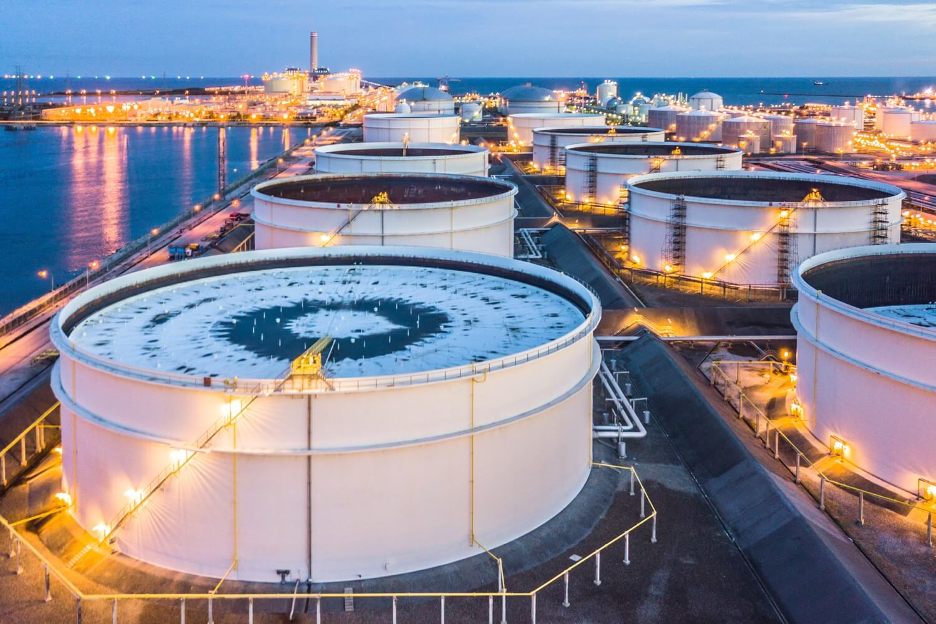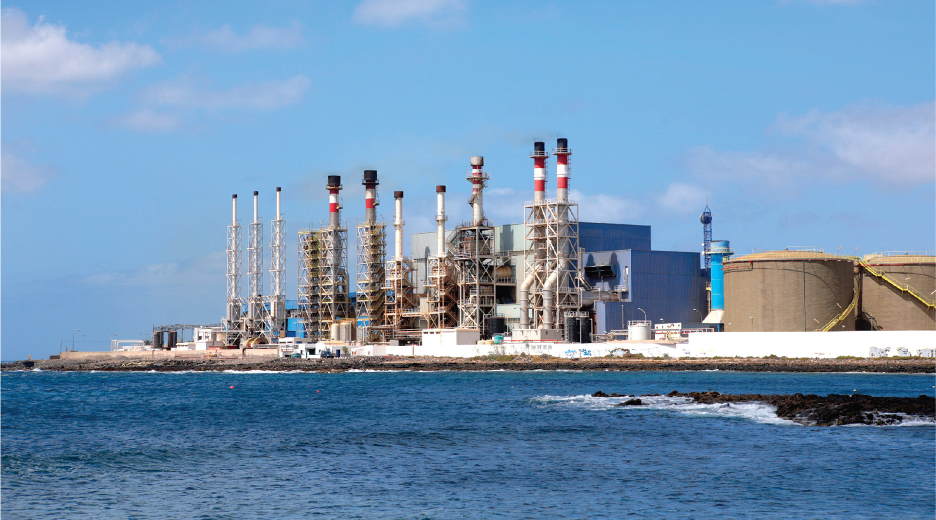As industrial production expands, water is becoming one of the most closely managed resources in petrochemicals. It plays a critical role across operations, from cooling and processing to cleaning and product formulation.
With growing environmental pressures and increasing water scarcity, efficient water management is a strategic priority. Because of that, across the value chain, companies are rethinking how they use water, while Egypt continues to explore new solutions through policy, infrastructure, and private sector partnerships.

Water Usage in Petrochemical Operations
Petrochemical facilities rely on large volumes of water for a range of core activities. The majority (over 90%) is allocated to cooling, which removes heat from reactors, condensers, and equipment.
Other key uses include:
- Steam generation for power and processing systems
- Product separation and refining, such as distillation
- Cleaning and maintenance to ensure operational integrity
While some water is lost through evaporation or discharge, most of it can be treated and reused for other purposes. Many refineries now recirculate cooling water up to 50 times, dramatically reducing raw water withdrawal.
Even small improvements in water efficiency can yield substantial savings, encouraging many producers to invest in technologies that reduce withdrawals and support internal reuse.
Wastewater Treatment Technologies
Petrochemical facilities depend on wastewater treatment systems to meet environmental standards and enable water reuse. Common approaches include:
- Mechanical systems like Sequencing Batch Reactors (SBRs) and activated sludge for sites with limited land
- Aquatic systems such as lagoons and wetlands in low-density areas
- Terrestrial systems that use soil and vegetation to filter contaminants
Anchorage Investments, led by Dr. Ahmed Moharram, is advancing these solutions in its integrated petrochemical developments. The company’s approach connects chemical production with sustainable waste treatment, aligning with Egypt’s Vision 2030 and supporting long-term industrial resilience through smart water reuse strategies.
Closed-Loop Water Systems
Closed-loop systems are designed to minimize water loss by circulating water in sealed pipes. This is often used in industrial cooling and heating. Despite their enclosed design, leaks in mechanical seals and overflow from expansion tanks can introduce new water, and with it, unwanted impurities.
These can lead to scaling, corrosion, and microbial growth, especially in stagnant zones. So, to maintain efficiency, operators use chemical treatments like oxygen scavengers, pH boosters, and biocides.
Besides that, real-time monitoring and lab analysis can help track key indicators such as pH, dissolved oxygen, and bacterial counts. Over time, system cleaning may be needed to remove accumulated corrosion or biofilm and restore flow.
Water Quality Monitoring in Industrial Zones
With dense industrial activity comes a high volume of water consumption and pollutant discharge. So, without proper oversight, this can threaten surrounding ecosystems and public health.
That’s why smart systems now integrate IoT, 5G, and cloud platforms to provide real-time tracking of water parameters such as pH, ammonia, turbidity, and conductivity. These technologies help automate data collection across the water cycle, from enterprise usage and pipe networks to treatment plants.
On another note, central monitoring hubs analyze trends, issue alerts when values exceed thresholds, and even trigger remote actions like shutting valves or diverting flow. This allows faster response, minimizes environmental risk, and supports long-term sustainability goals.
Desalination for Industrial Use

In water-scarce regions, desalination is becoming an increasingly vital solution for industrial sectors, particularly petrochemicals, where fresh water is limited or unavailable. By converting seawater or brackish groundwater into usable process water, desalination helps reduce dependence on local freshwater resources and supports long-term operational continuity.
Among the available methods, membrane-based approaches, especially seawater reverse osmosis (SWRO), are widely adopted due to their energy efficiency and consistent performance.
However, challenges remain, including high energy consumption and brine disposal. To address these, new technologies such as energy recovery systems and salinity gradient innovations are being explored to make desalination more sustainable and cost-effective for industrial use.
Reducing Water Footprints in Production
Minimizing a petrochemical plant’s water footprint begins with understanding how and where water is used. Water footprint assessments offer a structured approach to measuring direct and indirect water consumption, pollution levels, and efficiency gaps across the production cycle. Once the data is in place, plants can act on clear priorities.
Some of the most effective strategies include:
- Upgrading equipment to reduce cooling water demand and eliminate leaks
- Recycling and reusing process water wherever possible
- Optimizing steam and heat systems to cut down water loss
- Shifting to closed-loop or zero-liquid-discharge systems for high-efficiency water reuse
- Integrating real-time monitoring systems to track usage patterns and detect inefficiencies early
Together, these measures can reduce freshwater intake and ease wastewater treatment burdens, leading to cost savings and stronger environmental performance.
Impact of Water Scarcity on Project Planning
Water scarcity is becoming a critical factor in petrochemical project planning, influencing timelines, costs, and permitting processes. As a result, companies are integrating water risk assessments into early-stage design to build resilience and decrease exposure.
Financial institutions are also weighing water security when evaluating project viability, viewing it as an important part of long-term sustainability. This prompted companies to adopt more resilient, water-efficient designs from the ground up.
Environmental Compliance in Effluent Discharge
Effluent discharge refers to the release of treated wastewater from industrial facilities into the environment. In the petrochemical sector, this water often contains residues that must be carefully managed.
To comply with environmental laws, companies have to:
- Monitor pollutant levels
- Obtain discharge permits
- Follow national and international standards
Failure to meet these requirements can lead to fines, shutdowns, or long-term environmental damage. As regulations grow stricter, many plants are turning to advanced treatment systems to ensure compliance and reduce ecological risks.
Water–Energy Nexus in Petrochemicals
Water and energy use in petrochemicals are highly connected. Treating and moving water consumes energy, while power generation often requires water. Ignoring this link can hurt efficiency and raise costs.
A recent study introduced a “3M” model to optimize usage across systems, components, and units. It found key pressure points where savings matter most:
- Fuel and deoxidized water dominate water–energy demand
- Condensate recycling can reduce both water and energy use
- Wastewater reuse improves overall system efficiency
That means better planning can unlock resource and cost savings.
Egypt’s Water Management Strategy for Heavy Industry
Egypt’s water strategy for heavy industry focuses on sustainability, efficiency, and industrial zone readiness. Key pillars include:
- Expanding utility access in growth corridors like the Suez Canal Economic Zone
- Prioritizing water reuse, treatment, and desalination
- Incentivizing water-conscious infrastructure through policy and regulation
An excellent example of this is Anchorage Investments, whose $2.5 billion Anchor Benitoite petrochemical complex in the Suez Canal Economic Zone includes integrated systems for water reuse and treatment.
Final Thoughts
Water resource management is becoming an essential pillar of sustainable industrial growth. For the petrochemical sector, solutions like advanced treatment systems, smart reuse, and improved monitoring are no longer optional; they’re integral to resilience.
Egypt’s evolving strategy, supported by industry leaders such as Anchorage Investments, reflects a broader shift toward balancing production with long-term resource stewardship.